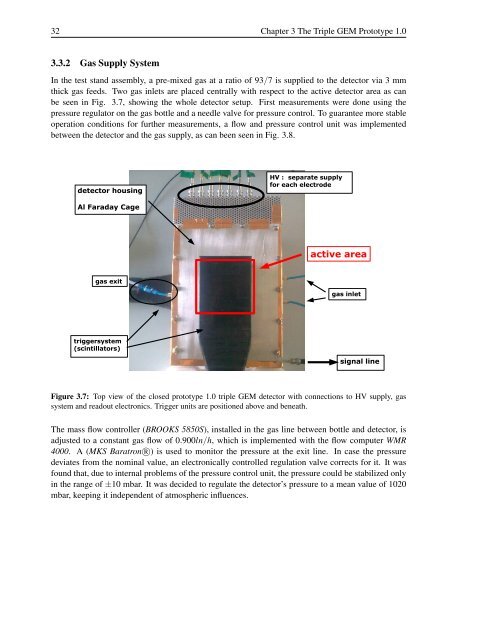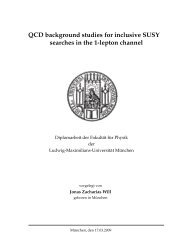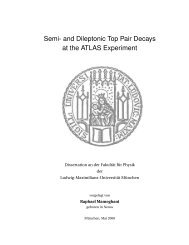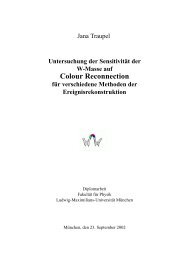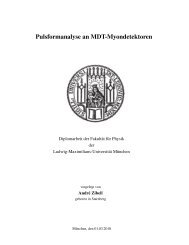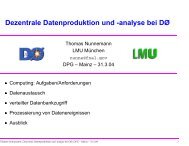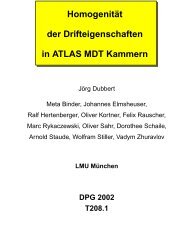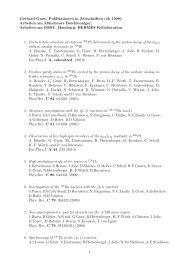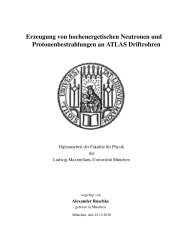development of micro-pattern gaseous detectors – gem - LMU
development of micro-pattern gaseous detectors – gem - LMU
development of micro-pattern gaseous detectors – gem - LMU
You also want an ePaper? Increase the reach of your titles
YUMPU automatically turns print PDFs into web optimized ePapers that Google loves.
32 Chapter 3 The Triple GEM Prototype 1.0<br />
3.3.2 Gas Supply System<br />
In the test stand assembly, a pre-mixed gas at a ratio <strong>of</strong> 93/7 is supplied to the detector via 3 mm<br />
thick gas feeds. Two gas inlets are placed centrally with respect to the active detector area as can<br />
be seen in Fig. 3.7, showing the whole detector setup. First measurements were done using the<br />
pressure regulator on the gas bottle and a needle valve for pressure control. To guarantee more stable<br />
operation conditions for further measurements, a flow and pressure control unit was implemented<br />
between the detector and the gas supply, as can been seen in Fig. 3.8.<br />
detector housing<br />
Al Faraday Cage<br />
gas exit<br />
triggersystem<br />
(scintillators)<br />
HV : separate supply<br />
for each electrode<br />
active area<br />
gas inlet<br />
signal line<br />
Figure 3.7: Top view <strong>of</strong> the closed prototype 1.0 triple GEM detector with connections to HV supply, gas<br />
system and readout electronics. Trigger units are positioned above and beneath.<br />
The mass flow controller (BROOKS 5850S), installed in the gas line between bottle and detector, is<br />
adjusted to a constant gas flow <strong>of</strong> 0.900ln/h, which is implemented with the flow computer WMR<br />
4000. A (MKS Baratron R○) is used to monitor the pressure at the exit line. In case the pressure<br />
deviates from the nominal value, an electronically controlled regulation valve corrects for it. It was<br />
found that, due to internal problems <strong>of</strong> the pressure control unit, the pressure could be stabilized only<br />
in the range <strong>of</strong> ±10 mbar. It was decided to regulate the detector’s pressure to a mean value <strong>of</strong> 1020<br />
mbar, keeping it independent <strong>of</strong> atmospheric influences.


